Jaga Jazzist: “We don’t know what nu-jazz means, but it never meant anything for us”
The Norwegian not-nu-jazz outfit talk about the making of new album Pyramid

Formed in 1994 when brothers Lars and Martin Horntveth were mere teenagers, Jaga Jazzist first introduced the world to their progressive experimental jazz project with their debut album Jævla Jazzist Grete Stitz.
Lauded for their originality and exhilarating live shows, the collective signed to Oslo independent Smalltown Supersound and recorded A Livingroom Hush (2002). An imaginative combination of lounge jazz, dub, post-rock and textured electronics, it was voted Jazz Album of the Year by the BBC.
As Lars Horntveth took control of writing duties, the Norwegian ensemble maintained their unorthodox approach to multi-instrumentalism, revitalising their sound with a spate of critically acclaimed experimental releases.
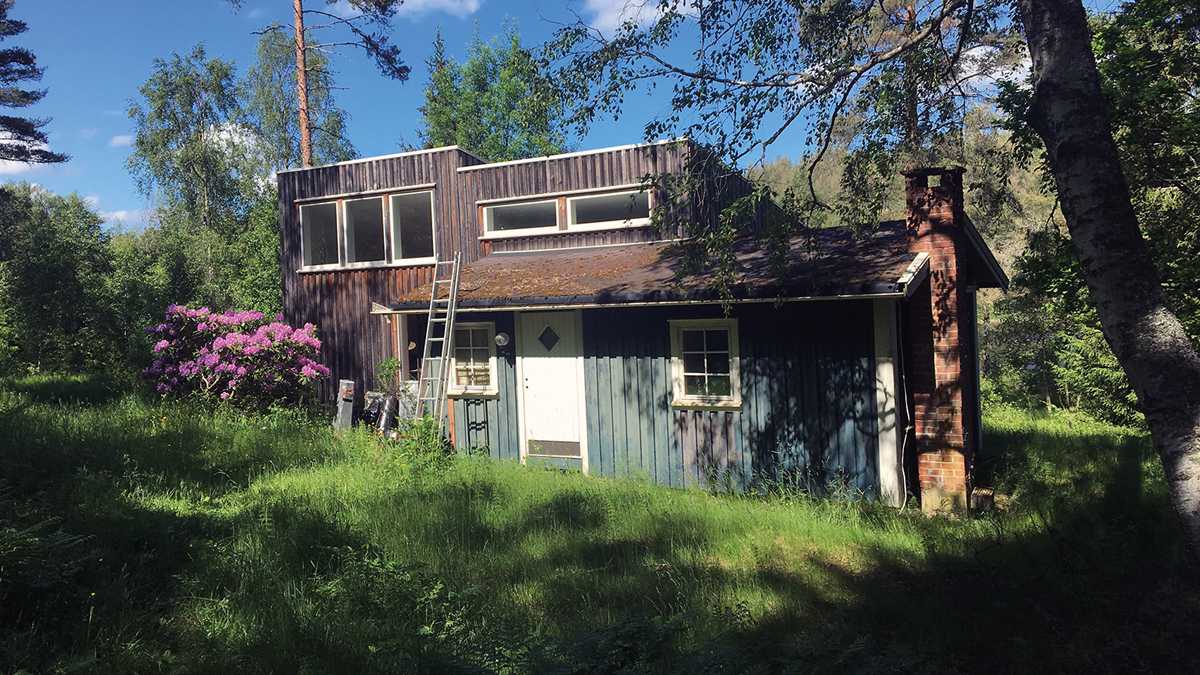
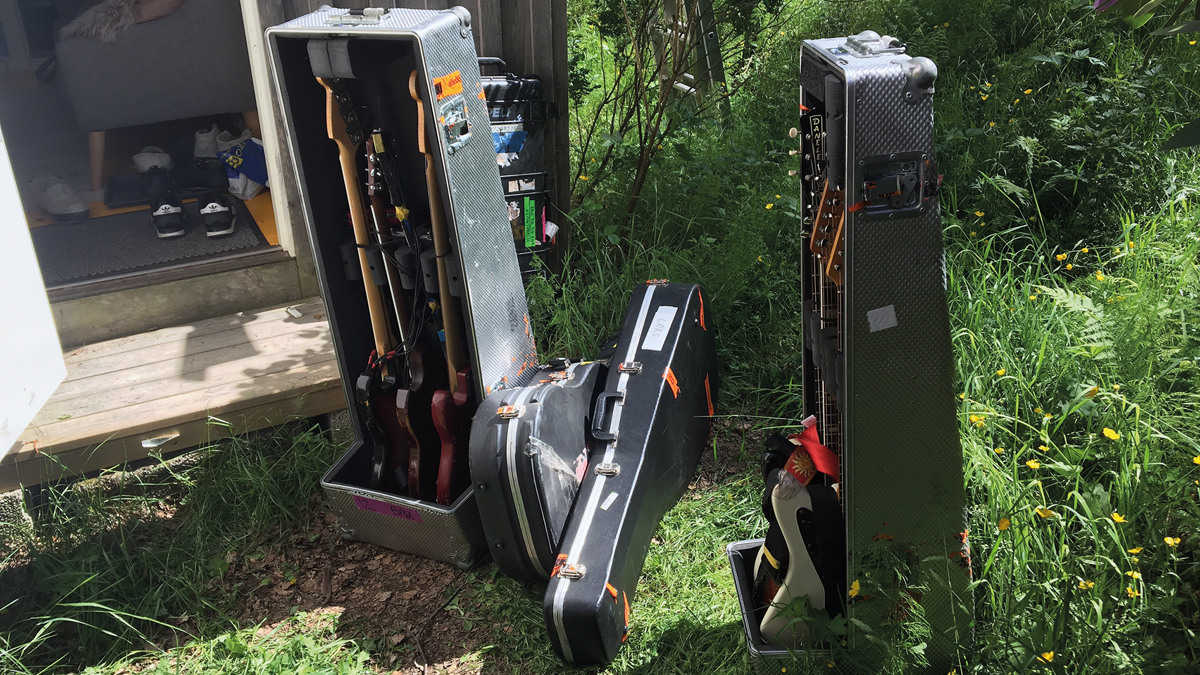
Now debuting on Flying Lotus’s Brainfeeder label, Jaga Jazzist’s latest long player, the conceptual Pyramid (available 7 August), saw the collective deliberately cutting themselves off from the world to focus on recording - spending two weeks bunkered in secluded Swedish woodland.
We spoke to Lars Horntveth and guitarist Marcus Forsgren, who joined the band in 2009, about their creative process...
Tell us about some of your influences. One that stands out is the British band Talk Talk?
Lars: “Someone said we like Talk Talk around 2001 and that got stuck onto some press releases, but they’re just one of the bands we listen to.
Want all the hottest music and gear news, reviews, deals, features and more, direct to your inbox? Sign up here.
“Jaga Jazzist has a strong influence from ’60s, ’70s and even ’80s Norwegian and European jazz, but the most inspiring people for us are those artists willing to go to different places. 20 years ago, Cornelius was a big one because he was willing to combine all these crazy different styles to see what happens.”
Marcus: “I am actually a big Talk Talk fan. I listened to Spirit of Eden and Laughing Stock a lot and actually worked for two weeks as an assistant with Phil Brown, the legendary engineer who recorded those albums. He had all these tales to tell about the recordings.
“For example, when the band rented a studio for Spirit of Eden, it was in a basement that had no windows. Everything was candlelit and they tried to keep it really dark in there to keep the spirit of autumn. After two months, the guy who owned the studio took them into his office and asked if they needed a psychologist - I think they spent a whole year working on those six tracks.”
Lars, astonishingly, you were only 15 when Jaga Jazzist’s debut album was released…
Lars: “When we started the band we wanted to play jazz music that was influenced by a modern big band in Norway called Oslo 13. That was the starting point, but we didn’t want to stop there. We wanted to play all kinds of music and it was a bit schizophrenic for the first three or four years because we did everything from hip-hop and rap to electronic and jazz until we found the core of what we wanted to do musically.
“The biggest change for us came when we recorded A Livingroom Hush in 1999 because it was the first time that we‘d really used a studio. It was a big change in how we made music and thought about music and production.”
Indeed, that album was named best jazz album of 2002 by the BBC. How did that impact you?
Lars: “It did have a big impact for us, but the award didn’t seem to have anything to do with who we were competing with. I think one of the other two artists nominated was Herbie Hancock, so it didn’t make much sense to win over him, but it was good recognition nevertheless.”
Marcus, what was the process that led to you joining the band?
Marcus: “I already knew Lars, Martin and a few others, and then Andreas invited me to a show after the band had played in my home town of Trondheim. I used to play in a band called The Lionheart Brothers and the guys used to come to my shows too.
“The Stix [album] was my introduction to Jaga and I guess they loved what I was doing. Lars asked if I wanted to join the band in 2009 when they’d just finished making the album One-Armed Bandit, so I got to listen to that and tried to learn the album.”
Did you find it easy to integrate into the band?
Marcus: “I spent a few days with Lars going through all the songs. Some parts allowed me to be quite free and others were already quite well-written so I had to learn those, but we rehearsed and went on tour when the album was released.
“For the first two or three years I was just playing live; it wasn’t until we started making Starfire that I began spending more time in the studio.”
You’ve been labelled a nu-jazz band. Is that something you’re comfortable with?
Lars: “No [laughs]. I’m as comfortable with that as some bands are with the style of nu-metal. I don’t know what it means, but it never meant anything for us and we never really understood what we were doing being placed alongside a lot of the other bands included in that terminology. The whole point of making this kind of instrumental music is to be very vague and unspecific in style.”
You’ve moved to the Brainfeeder label for your new album, Pyramid. What precipitated that?
Lars: “Ninja Tune wanted to spend money on specific artists and maybe Jaga wasn’t part of that group anymore. The funny thing is that Brainfeeder is distributed by Ninja Tune so the whole system is the same. Maybe Ninja Tune didn’t have the time or resources to release this album when we wanted, but Brainfeeder did so it wasn’t too dramatic.”
Is it accurate to say that the last couple of albums - Starfire, and now Pyramid - are a little more condensed?
Lars: “We were talking about that earlier. Almost a year ago we played a festival in Oslo with the band we have now, which included five of the old members that recorded A Livingrooom Hush. We played the whole album live and love the album, but it seemed funny playing it, as it’s so easy and simple compared to what we’re doing now. I’m not saying that’s a bad thing, but the new music is way longer and more condensed. I don’t think we could make those short, poppy tracks again.”
Why did you want to elongate the tracks?
Lars: “It’s not about trying to write a long track for the sake of it, it’s more about creating a wonderful journey where a lot of things are happening throughout. That means the music needs to be a bit longer and not get too busy.
“For us, the last two albums have been a study in how to make really long tracks that make sense and to find out how we can stretch out a track without having too much information. We’ve had to learn how certain parts of a song have to be a bit more toned down in order for the exciting parts to work. Finding that temperament is something that Marcus and I really struggled with on the new album.”
Does it also concern you that people’s attention span is not the longest these days?
Marcus: “It’s true that people don’t listen to albums much anymore and prefer to listen to singles and playlists, but I still think there’s an audience for certain styles of music that are more meditative.”
Lars: “I still really like listening to long double albums as well as superfast two-minute rap songs. I don’t think the album format is dead at all, so while a lot of artists are saying they’re only going to release singles or EPs I don’t think it’s going to happen.
"Even if big radio stations don’t play your music, you can still be successful and find an audience through other mediums.”
“When you make an album you never know which song is going to be the single - you have to make 10 or 15 songs to find out, and there’s something about that process that means the album format will always be what people want.”
Marcus: “There isn’t just one formula to be successful, either. With the internet and globalisation you can do it in so many different ways - you just have to find your way and your own audience. Even if big radio stations don’t play your music, you can still be successful and find an audience through other mediums.”
Plus the whole ethos of Jaga Jazzist is not to be defined by limitations…
Lars: “For us to say that would sound really pretentious, but when you say it like that it sounds great.
“One thing that’s encouraging for us is that Tame Impala is one of the biggest bands from the last 10 years, and that’s great for those of us on the left side of music. I went to a festival in a New York a couple of years ago with Tame Impala headlining and Frank Ocean playing before him and so much of their music was instrumental and proggy. They’re very far from Coldplay, but were on a 30 square foot stage in front of 50,000 people, and they’re also album artists.”
Pyramid also seems a little calmer than your previous works…
Lars: “That’s been the plan for the last two albums now. The start-off point was to calm down and try to make simpler melodies with less stuff happening at the same time. Starfire didn’t really end up like that, but Pyramid has long sections where the melodies are really simple and I was keen to make something that was both beautiful and could be repeated endlessly without sounding too cheesy.
“The second song, Spiral Era, is a good example and the last track, Apex, which revolves around one simple note alongside a lot of hectic stuff. Again, the length of the songs was the biggest challenge.”
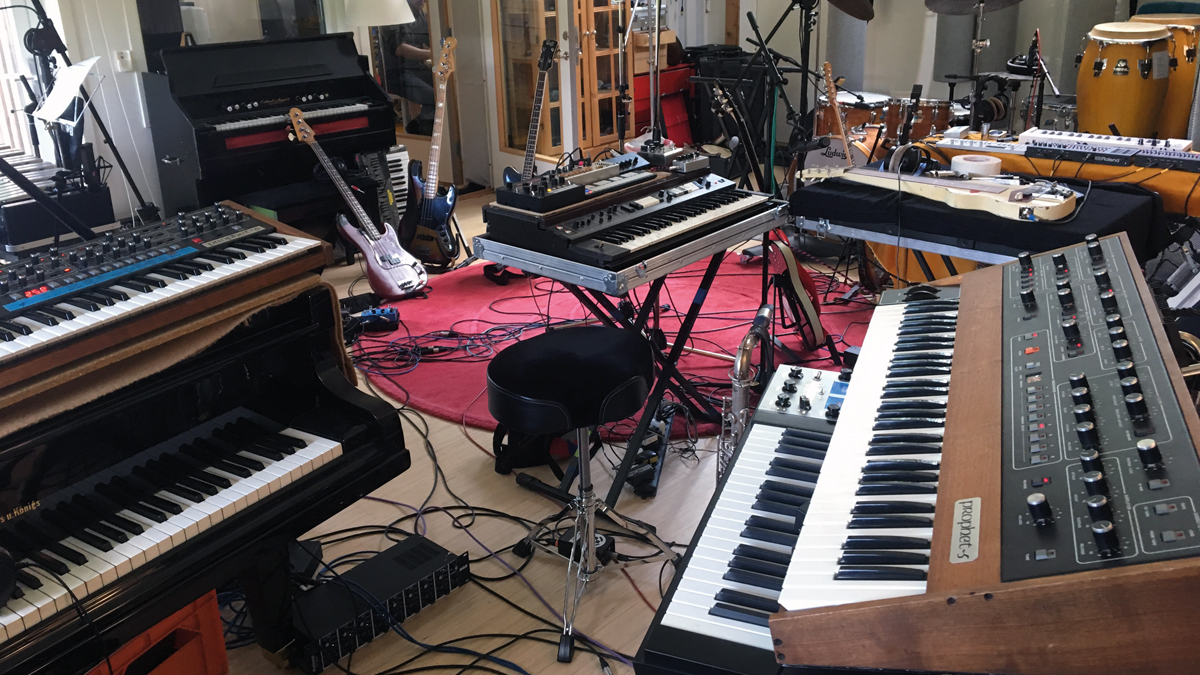
You’re still feeling your way around to some extent. Is that journey never-ending?
Lars: “One of the big things about having and keeping a band going for so many years is that you really have to find a way to keep things fresh. Economically, having a band like this is a pain in the arse. It’s not easy having 11 people touring all the time, so everyone has to be very much into the music and surprising ourselves is a very important part of what we’re doing.
“The main reason we still find this really enjoyable is that we always try to do the opposite of what we did the last time. The previous album was mostly recorded on my laptop while I was living in LA. We replayed a lot of the sections with all the musicians in Jaga, but it was always recorded one-on-one in different studios.
“With Pyramid, everyone was in the same room rehearsing and trying to find out how we could improve the songs as a band rather than sections of a band.”
Being instrumental, do you have a concept of what the songs are about or is it entirely based on intuition and feeling?
Lars: “There’s not much symbolism to the songs themselves. The tricky part is that we’ve been together for 25 years, so how do we make songs in a way that’s not repetitive? That’s why we’re always trying different production techniques and combining instruments.
“When I make music for Jaga I’m actually trying to make music that’s not for Jaga. For example, the last song, Apex, was made because I was really inspired by Lindstrom and Jon Hopkins. I wanted to make music that I could listen to in the car, basically - driving music.
“The Shrine was meant for a movie that I was making but it didn’t fit into that movie so I thought we could do something really cool with that for Jaga.”
You’ve always been reluctant to use vocals…
Lars: “We do use vocals but it’s more like humming than lyrical. I can think of a million ways to make this band more commercial, but not having vocals forces the band to stay creative. We’re also all working in other bands as producers and using vocals all the time, so we don’t really feel a need to move Jaga beyond being an instrumental band.”

So although you’re the primary writer Lars, this time everyone got in a room together and jammed out ideas?
Lars: “That’s not exactly how it happened. I always make really detailed demos and I did that with Pyramid, so the songs had pretty good demos and everyone sort of knew what parts to play.
“Of course, when we start working on it we hope to get something quite different to what I thought. It’s like the band is breathing life into the material, so sometimes the song changes a lot and other times it ends up exactly like I thought it would.
“I wouldn’t call it jamming; it’s more about improvising to find the right combination of sounds. The bass player may play a bass part but we also try to change everything up. Everyone has a keyboard and a bunch of different instruments around them, so we’re changing the gear palette a lot of the time.”
Marcus: “You also have to respect the idea of the song and, as Lars said, the demos are quite detailed and well arranged. Then you have to find your part and work within those parameters to find out how you can make the song a better version of itself.”
Lars: “That’s one of the big things we enjoyed about recording this album. We had time to relax and make these arrangements without being on a schedule. For the first time in a long time, I felt that everyone had the possibility to be a musician but also step out of that way of thinking and become a producer or engineer. That was very good for the process because it allowed everyone to see both sides of the production and decide whether a track needed a little more salt and pepper or a little.”
How complete were your original demos?
Lars: “Most of these songs were recorded in a session using Pro Tools that already had certain synth parts, so we didn’t need to start the recordings from scratch. It was a combination of making demos in Pro Tools but also combining that with the notation program Sibelius, so a lot of soft synths were used in the conception of the tracks.”
Marcus: “A lot of the ideas in the songs actually sound better programmed than played and it’s cool to combine those elements, some of which are really mechanical and others much looser.
“The reason this album is so strong is that we rigged everything up, arranged the songs as a live band and dissected it again afterwards, recording parts step by step. In that way, we could combine the band vibe with the parts that needed to have the MIDI or soft synth elements Lars had already arranged.”
Marcus, can you isolate yourself from the process that Lars is describing and explain how you’re a part of it?
Marcus: “Well I’m not interested in being a musician per se or a technical guitar player. I want to be the best I can be, but there’s so much more to music, music making and playing in a band. I’m not totally occupied by guitar, I play some synths live too, but effects have always been a big part of my guitar playing.
“When I was younger I was really into shoegaze music and was a big My Bloody Valentine fan, so that style comes naturally to me when I play guitar, but I also run a studio and work as a producer, so when I work with music I’m always thinking in those terms.”
How long were the studio sessions for Pyramid?
Lars: “We decided to work from 10am until 10 at night, which is 12 hours, but after that some of us would be awake until 4am. Bear in mind, the album was recorded in the summertime in the middle of a Swedish forest about three hours from Oslo. There was no reception, so we would watch TV, play cards or just continue working on music.
“We also had a big gnat attack at the cabin - these small mosquitos. The weather was amazing for the two weeks we were there, but we couldn’t be outside for long so there were no extra cigarette breaks. We’ve had the same guys in the band since around 2010 now, and it’s definitely the best group we’ve had, socially and musically.”
What was your approach to recording the various instruments?
Marcus: “We used whatever was in the studio cabin for recording, which included a bunch of different compressors, API preamps, Neve clones and some Neumann M49 and Telefunken C12 tube mics.
“We recorded through a lot of outboard but Pro Tools is at the heart of the studio. The record was actually mixed in my studio with everything running through an old ’70s Neve mixing desk and some tube compressors and EQs, so everything was coloured using old vintage gear.”
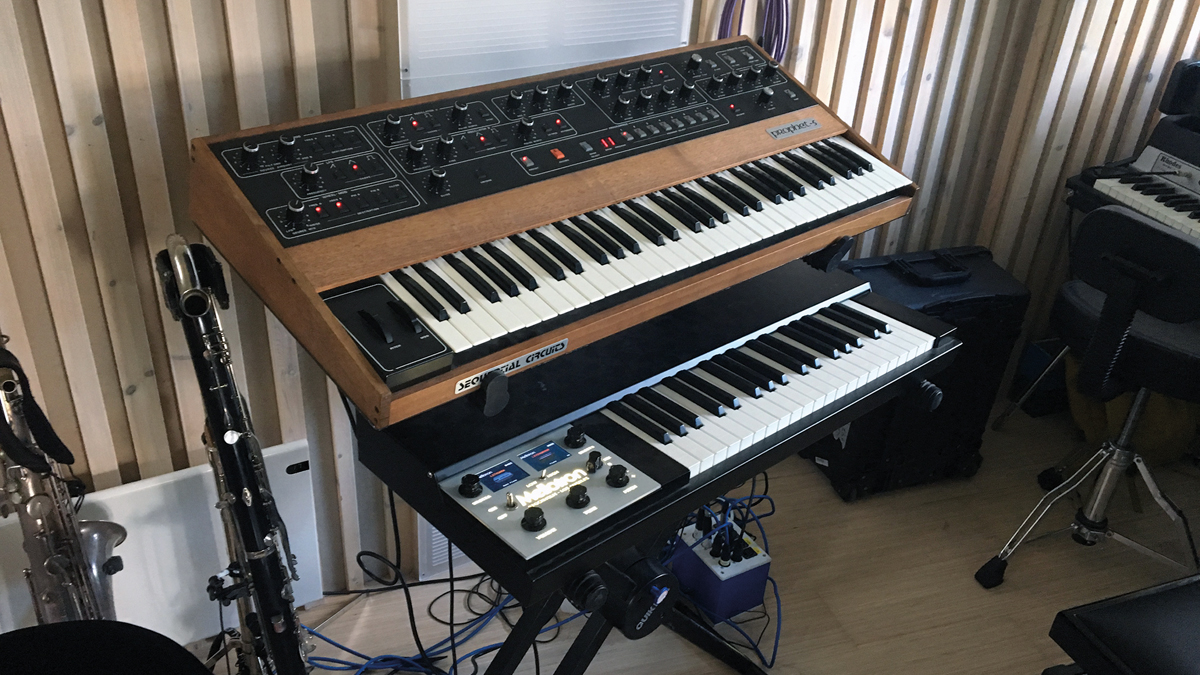

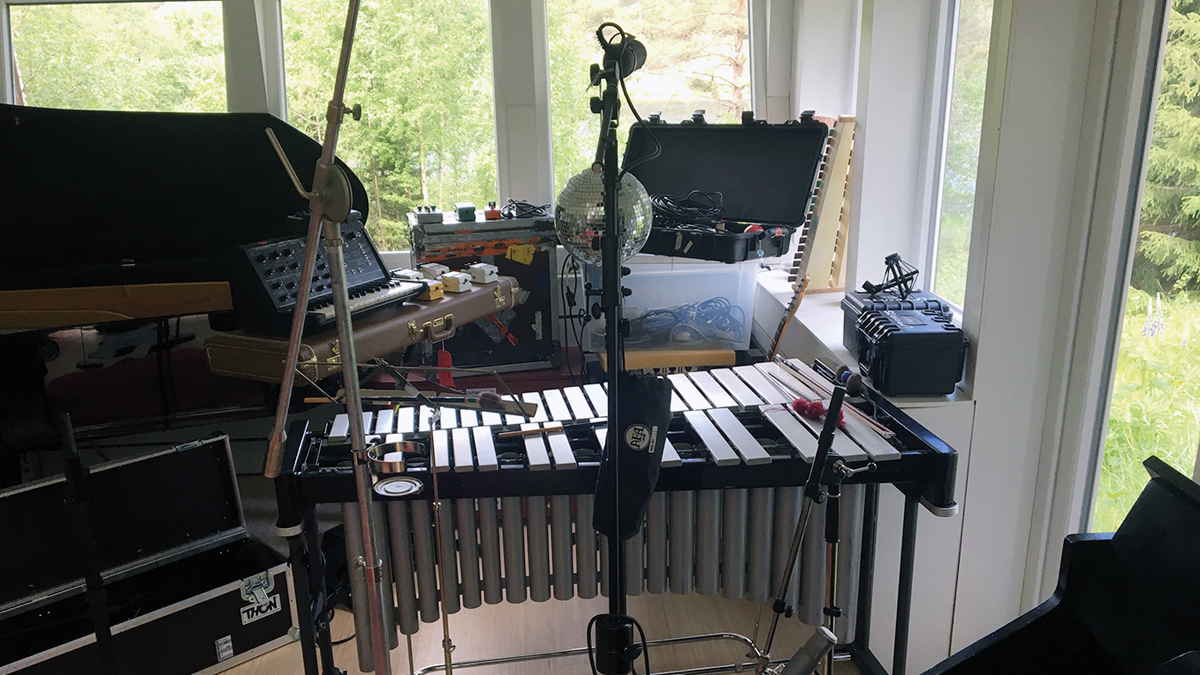

Lars: “We brought most of our touring gear to the cabin too, plus a Prophet-5, a Clavinet and a few older synths, although prior to that we’d already spent a lot of time making music in my studio which has a lot of synths. On the track Tomita, the big Yamaha CS-80 sound actually comes from using Arturia software and Keyscape.”
Pyramid is also your first self-produced album. How did that change things for you?
Lars: “Mixing and editing was the biggest challenge for us, although it was a struggle to self-produce the album because we’re usually an outsider in that process. We found that it’s difficult to surprise yourself when you’re already involved in every decision.
“We didn’t change the form of the songs during editing as much as we normally would; we just spent more time editing and polishing people’s playing. For me, that demonstrates that we’re better producers now than we were 20 years ago.”
Marcus: “It’s a difficult thing to mix your own work. When I mix other albums I can listen with fresh ears and know immediately what direction to go in, but when you’ve heard a song one thousand times from the first bass drum to the last melody, you’re basically deaf to the essence of the song. So I spent a lot of time just trying to figure out what the most important thing about each song was.”
The track Tomita is reminiscent of Blade Runner, particularly Dick Morrissey’s sax…
Marcus: “When Lars played the demo version, I immediately fell in love with it. I’m a big, big Blade Runner fan and especially love the soundtrack, so it was natural for me to go down that road.”
Lars: “I didn’t think about that at all actually. I watched the movie and have a strong vision of how that soundtrack sounds as an idea, but can’t remember the saxophone. But the Blade Runner reference is there for sure, with the big stretched out pads and arpeggios.
“I started out playing saxophone but also play a bunch of other things. It’s not a goal for me to have more saxophones in pop music, but I always listen to jazz music where the saxophone has always been there. One of the main reasons I play a bunch of instruments is because I don’t want to be the guy on stage waiting his turn!”


Future Music is the number one magazine for today's producers. Packed with technique and technology we'll help you make great new music. All-access artist interviews, in-depth gear reviews, essential production tutorials and much more. Every marvellous monthly edition features reliable reviews of the latest and greatest hardware and software technology and techniques, unparalleled advice, in-depth interviews, sensational free samples and so much more to improve the experience and outcome of your music-making.
